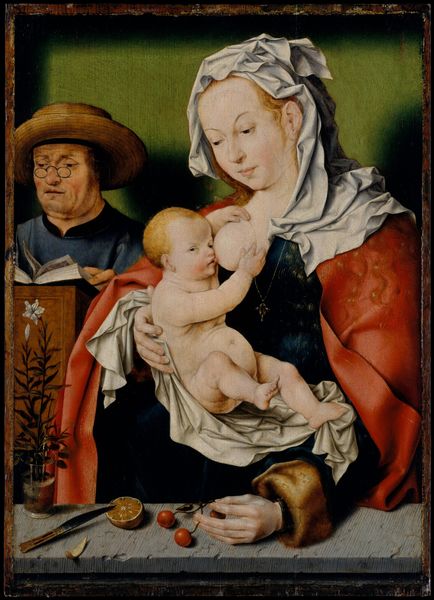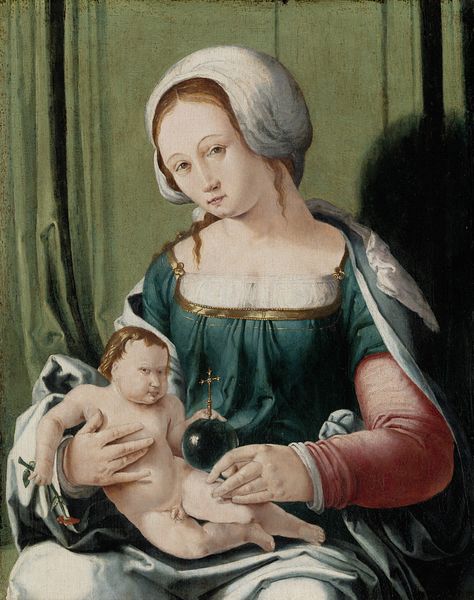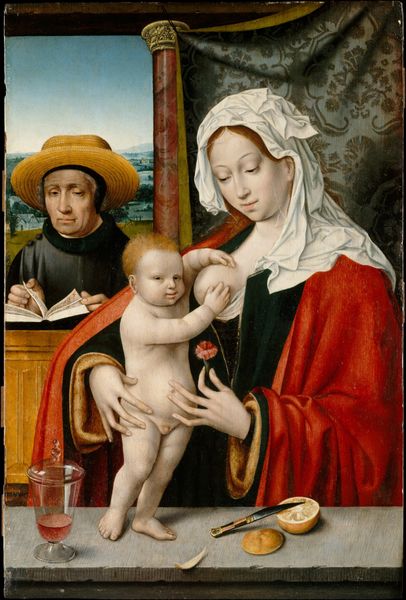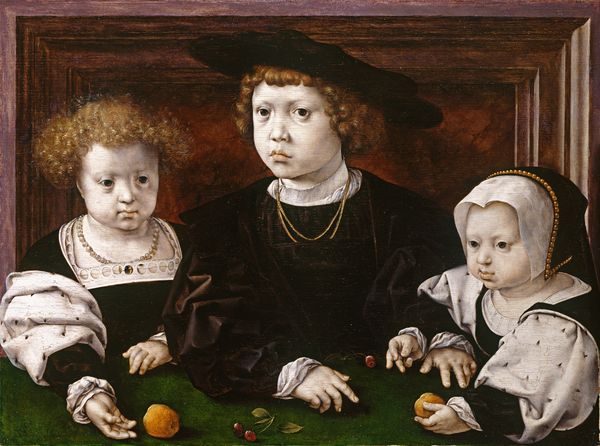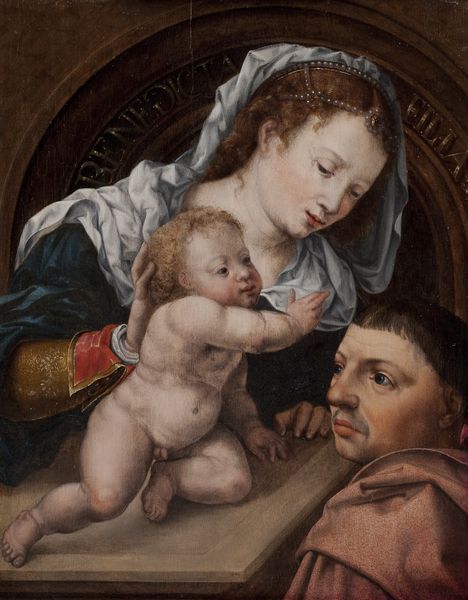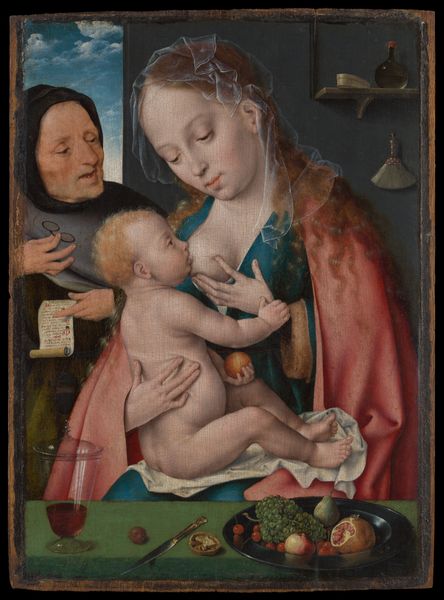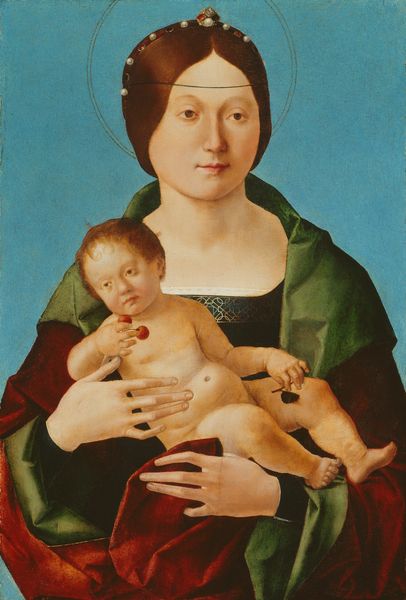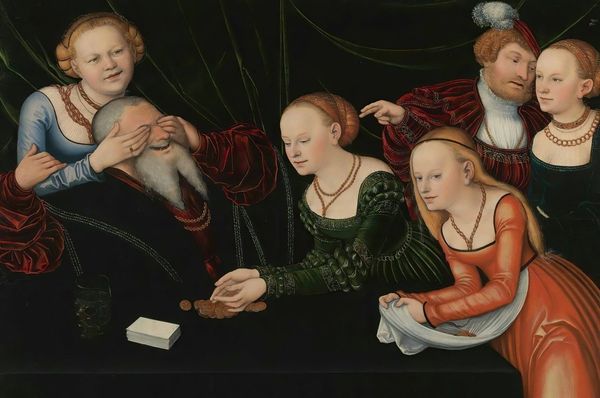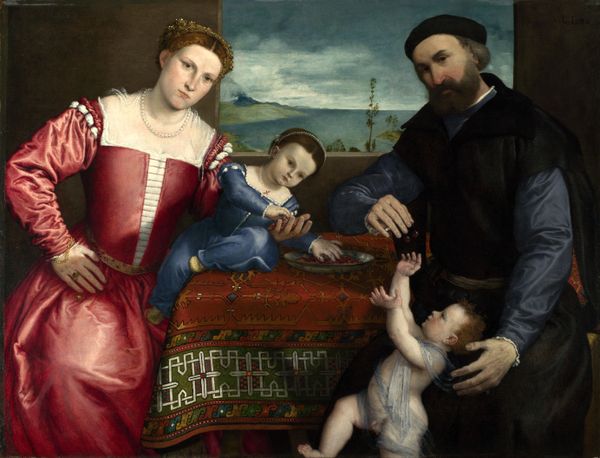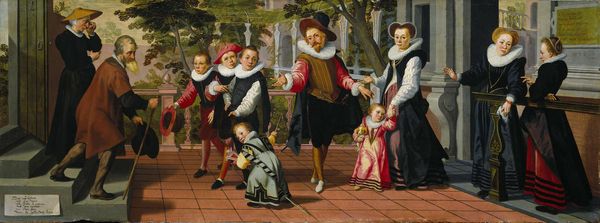
Double Portrait of Justinian von Holzhausen and His Wife Anna, née Fürstenberg 1536
0:00
0:00
oil-paint
#
portrait
#
oil-paint
#
figuration
#
11_renaissance
#
oil painting
#
italian-renaissance
Dimensions: 68.6 x 98.5 x min. 0.8 cm
Copyright: Public Domain
Editor: This is a rather striking double portrait from 1536 by Conrad Faber von Kreuznach, titled "Double Portrait of Justinian von Holzhausen and His Wife Anna, née Fürstenberg". The detail in the oil paint is impressive. I'm particularly drawn to the textures of their clothing and the items on the table. What catches your eye in this piece? Curator: The intense material presence of this piece commands attention. The rich textiles – his fur-lined coat, her velvet dress – and the metallic sheen of the gold jewelry signal wealth and status, outcomes of mercantile activity. But notice the labor invested, not just in the objects themselves, but in Faber's depiction of them. Editor: Yes, you can almost feel the weight of the fabrics and the coolness of the metal. Is the family's social position significant? Curator: Absolutely. These weren’t just decorative elements; they were powerful statements of identity. These items testify to trade networks, craft guilds, and sumptuary laws of the time. Do you think it's merely coincidental that Faber chose to render these details with such precision? Editor: I suppose not. The way the objects are portrayed must speak to something more. They indicate the significance and power that materials can hold. I now see that focusing on just the subject of the artwork overlooks all this effort that goes into art-making. Curator: Precisely. Examining the materials, production techniques, and the social context within which the artist worked reveals the economic structures underpinning the art itself. Understanding art, then, means understanding these relationships of material power. Editor: Thank you, I will now remember how powerful those factors really are. It is no longer just brushstrokes on canvas but social, economic and class dimensions frozen in oil!
Comments
stadelmuseum almost 2 years ago
⋮
Conrad Faber was the ‘house painter’ of the Frankfurt patriciate in the first half of the sixteenth century. This double portrait holds a prominent position among his innumerable likenesses, of which many are quite formulaic in nature. Justinian von Holzhausen, a man of humanist learning, had it painted of himself and his wife. The winged Cupid is unique in painting north of the Alps. With its arrow and bunches of grapes, it invokes sensual love as the foundation of marriage – an astonishingly candid reference to sexuality for the time in which the picture was painted.
Join the conversation
Join millions of artists and users on Artera today and experience the ultimate creative platform.
